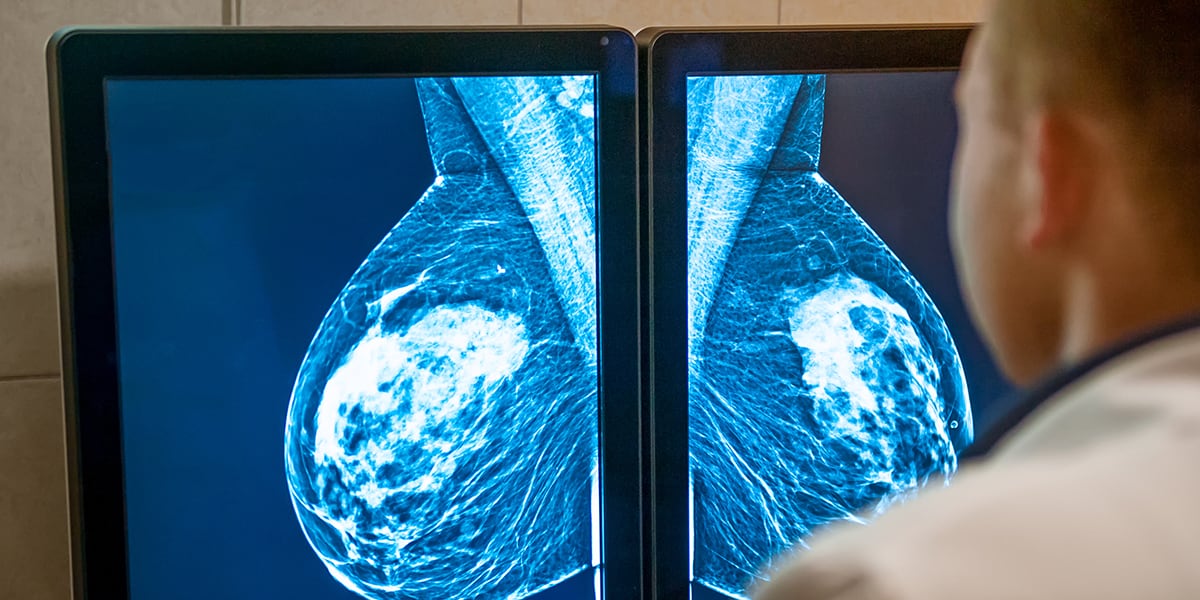
Getting a breast cancer diagnosis is overwhelming. And if you can’t find accurate, relevant information about the type of breast cancer you have, it can feel impossible to get to grips with your diagnosis. That’s why it’s important to find an information source you can trust.
In this article, we’ll guide you through the different types of breast cancer and how to recognise them. Understanding the basics of each breast cancer type can help you see the full scope of your potential treatment options, outcomes, and prognosis. Simply having access to reliable information can already help make your diagnosis feel more manageable.
How many types of breast cancer are there?
There are several types of breast cancer which are most commonly subdivided by their receptor status:
- Estrogen hormone receptors (estrogen is a sex hormone which is important for the reproductive system).
- Progesterone hormone receptors (progesterone is a sex hormone important for the menstrual cycle and pregnancy).
- The expression of epidermal growth factor receptor 2 (HER2) proteins (HER2 is a protein that plays an important part in the growth and maintenance of healthy breast cells).
By looking at the presence of these receptors, 4 different types of breast cancer can be distinguished. These are:
- Luminal A breast cancer
- Luminal B breast cancer
- HER2-positive breast cancer
- Triple-negative breast cancer (TNBC).
What are the 4 main types of breast cancer?
The 4 main types of breast cancer can be distinguished by looking at the presence of certain hormone receptors. Each of these breast cancer types requires different treatment strategies and can have different outcomes.
Luminal A breast cancer
This type of breast cancer is characterized by the presence of estrogen hormone receptors and/or progesterone hormone receptors, and the absence of the HER2 receptor. This type of breast cancer has the best overall outcome with higher survival rates and lower chance of recurrence than other types. This is because they respond well to treatment with hormone therapy or chemotherapy.
Luminal B breast cancer
Luminal B tumors are characterized by the presence of estrogen hormone receptors. Progesterone hormone receptors may be present as well. This subtype of breast cancer often grows faster than luminal A breast cancer. These tumors can also be treated with hormonal therapy and chemotherapy.
HER2 breast cancer type
Types of breast cancer with high HER2 expression (high levels of HER2 on the cell surface) often don’t have estrogen or progesterone hormone receptors. HER2-positive breast cancers often grow faster than luminal breast cancers and are more aggressive. The prognosis of people with this type of breast cancer has improved over the past couple of years, due to the use of targeted therapies such as Herceptin (Trastuzumab).
Triple-negative breast cancer
Triple-negative breast cancer is characterized by the lack of expression of progesterone hormone receptors, estrogen hormone receptors, and HER2 proteins. This type of cancer can be further divided into numerous subtypes, each of which may require its own specific treatment. Outcomes with these types of cancers often vary due to this. Triple-negative breast cancer is one of the more aggressive types of breast cancer with a high chance of relapse and rapid growth.
Distinguishing the different types of breast cancer in another way
The different types of breast cancer can also be categorized according to which part of the breast the tumor develops in. Breast cancer can be:
- Non-invasive: This type of breast cancer hasn’t spread to the surrounding tissues and can be found locally in the ducts of the breast (Ductal Carcinoma in Situ) or in the breast lobules (lobular carcinoma in situ)
- Invasive: This type of cancer can also be found in the ducts of the breast but has spread to the surrounding breast tissue. This is one of the most common types of breast cancer.
- Secondary or metastatic: These terms describe cancer cells that have spread to other parts of the body beyond the breast. This can happen through the blood or via lymphatic drainage network.
There are also some rarer types of breast cancer, which include:
- Lobular breast cancer – a type of breast cancer that occurs in the milk-producing glands of the breast.
- Inflammatory breast cancer – an aggressive type of breast cancer that blocks the lymph vessels of the breast, causing the breast to appear red and swollen.
- Paget’s disease of the breast – a type of breast that causes changes to the skin of the nipple and its surrounding tissue.
Are there breast cancer types that are hereditary?
Some breast cancer types are associated with mutations that can be inherited within families. The most significant of these mutations occurs in the BRCA1 or BRCA2 gene causing it to malfunction. Individuals with the BRCA1 or BRCA2 mutation are more likely to develop a triple-negative type of breast cancer, which is more difficult to treat.
It’s important to keep in mind that the mutation of the BRCA1 or BRCA2 gene isn’t the only risk factor for developing breast cancer and that not every individual with this mutation will develop breast cancer. Breast cancer is a complex condition with multiple risk factors, including age, family history, and personal medical history. If you or someone you love has the BRCA1 or BRCA2 mutation, then there are certain steps that can be taken to lower the risk of developing cancer.
In summary
>Breast cancer types can be divided according to their location in the breast, or the types of receptors they present on their cells. Each of these types of breast cancer has its own outlook and requires different treatment strategies.
FAQ
References
- Albagoush S., Limaiem, F. (2022). [HER2], accessed December 7th, 2023
- NHS (2019). [Breast cancer in women], accessed December 7th, 2023
- NIH (2016). [Inflammatory breast cancer], accessed December 7th, 2023
- CDC (2023). [Does breast or ovarian cancer run in your family?], accessed December 7th, 2023
Uta Leyke-Hess holds a degree in business administration with a strong focus on healthcare. Since 2015, she has been supporting various medical websites by creating high-quality, yet easy-to-understand content with the help of a team of qualified external writers she has assembled.
Since her additional qualification as a Medical Writer from the Apollon University of Applied Sciences in Health Economics, she has been writing medical texts, which are then proofread by doctors.

